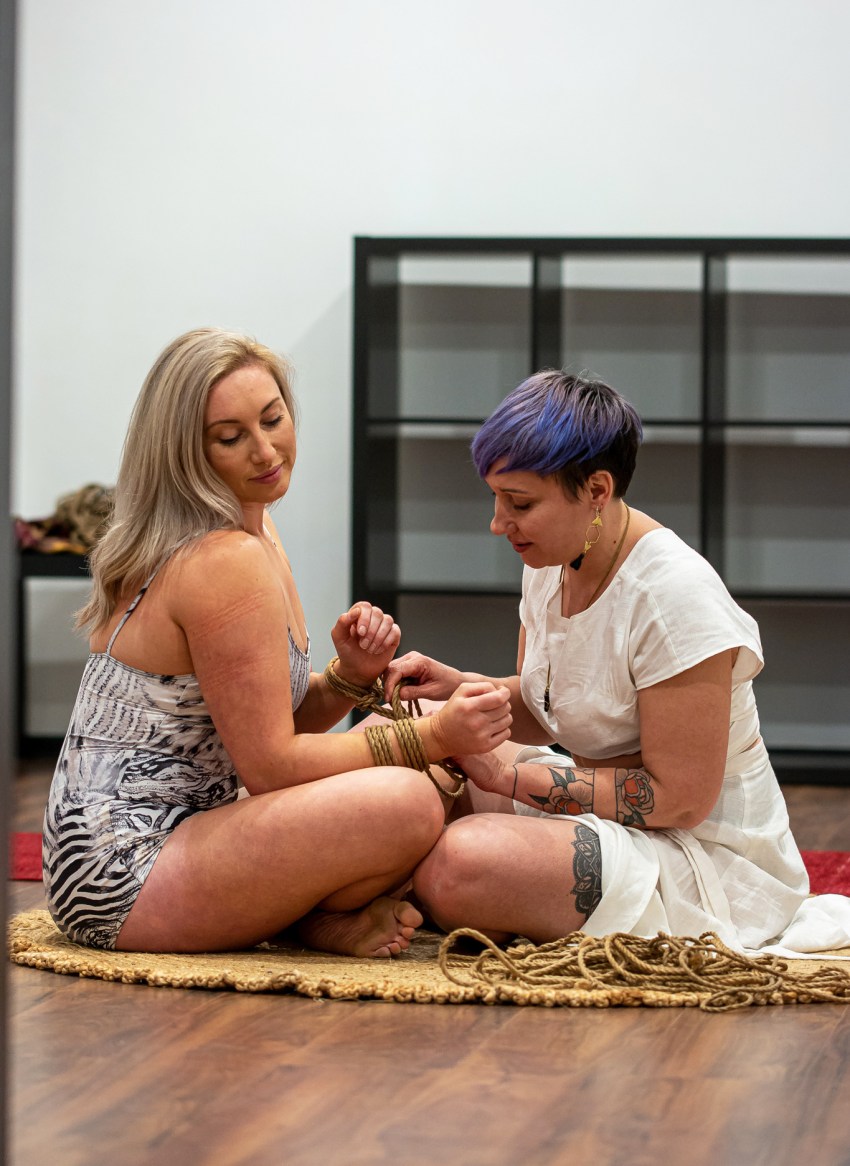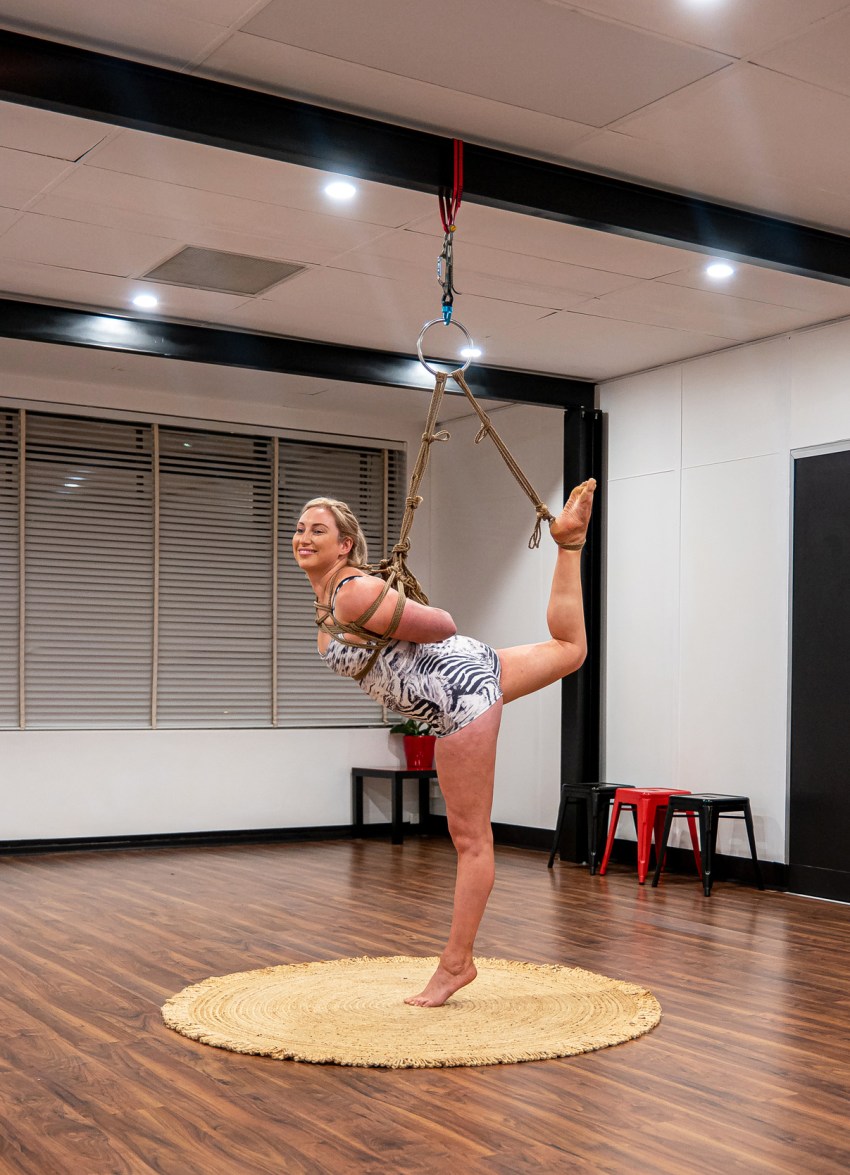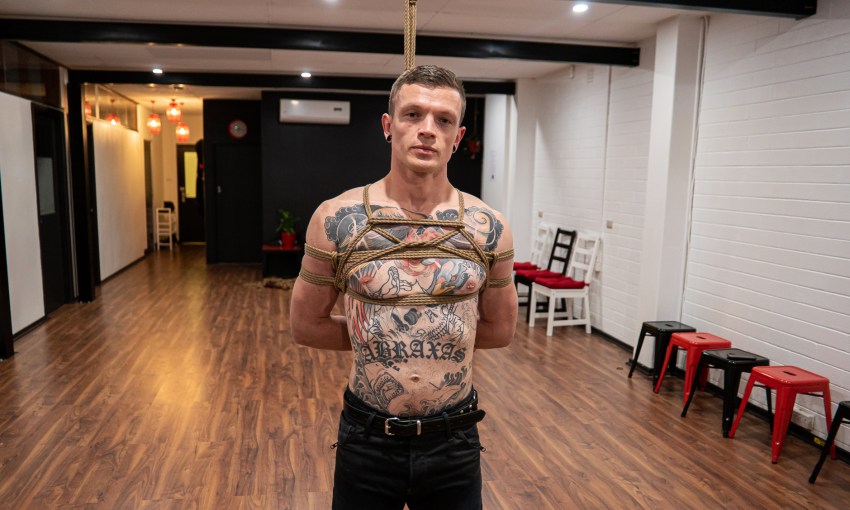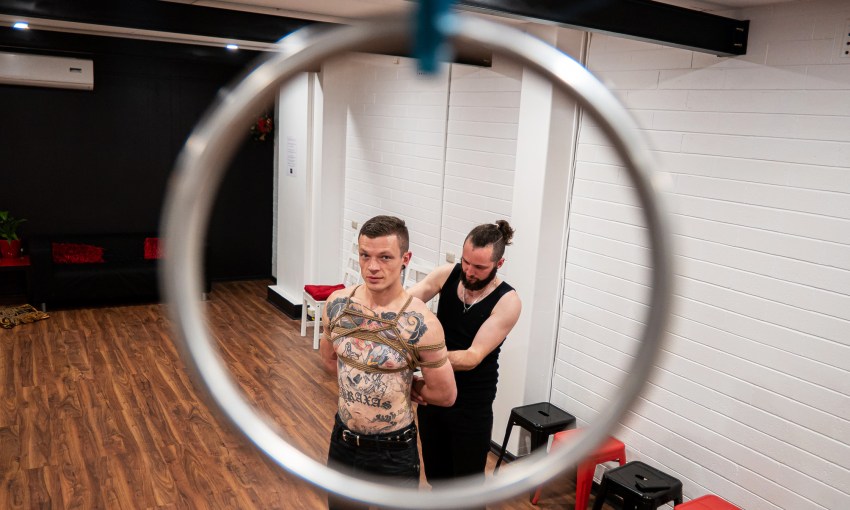Members of community collective Peer Rope Adelaide are all bound by their love for Japanese rope play. CityMag spoke to the group’s director about the clandestine art form and their shiny new Hutt Street studio.
Demystifying shibari with Peer Rope Adelaide
Peer Rope Adelaide director Skye Bee says the one of the most common misunderstandings about the ancient art form shibari (sometimes known as kinbaku) is that it’s only for sexually intimate couples.
But, Skye says, we’re all masochists to some extent.
Peer Rope Adelaide have opened a new city studio on Hutt Street. Enquire within for the address and class information.
Connect:
Facebook
Long-distance runners push their bodies to the limit and experience highs from crossing the finish line, even though they’re blistered and sore. Skye’s version of this feeling comes from being suspended in the air, tied up in rope, delicately testing how much pressure her body can endure.
“When I’m in the rope, I’m in that present moment,” Skye says.
“There’s this almost meditative state you get into, somewhere between strength, flexibility, art, connection and pain, all put together.
“I like all my worries fading away. And the physical strength, learning to be more flexible, and increasing my core and shoulder strength as well.”
Peer Rope Adelaide is a not-for-profit organisation run by seven volunteers, including Skye, that aims to foster knowledge and appreciation of shibari in Adelaide.
Three nights a week, over 100 active members – spanning from 18 to 60 years-old – roll through the centre’s doors to safely learn how to tie their partner in knots or hang above the ground like some kind of sexy netted salami.
Shibari originates from 15th century Japan. It was a way for samurais to restrain and torture their captives with rope.
It crossed over into the erotisphere in the late 19th century, and is now known within the kink and BDSM communities for stimulating pressure points and erogenous zones through rope positions.

Skye (right) says the right partner is crucial to the enjoyment of shibari
But the Peer Rope Adelaide experience is never sexual, Skye clarifies.
“What we offer is clinical classes – and people can take it home and use it for what we call ‘bedroom bondage’ – but in a class environment it’s completely clinical,” she says.
“You’re learning alongside a facilitator on how to tie knots, what pathways are safe on the body to avoid nerves, and how you can move your bodies, either as the person handling the rope, which we call the rigger, or the model.”
The organisation has been in its new Hutt Street digs for about a month now. The new space includes three classrooms and 16 suspension points.
Due to the Peer Rope Adelaide being a not-for-profit collective reliant on an annual $20 subscription fee from members, the fit-out was funded through donations on a GoFundMe page.
Skye says the collective wouldn’t operate as a business as it’s not designed to make money
“We do this because we love it and we know there’s a lot of people that are searching for it,” she says.
“We’re about connecting people who all have the same interest.”
Skye says she was excited by this and what’s to come. As restrictions on businesses ease in South Australia, she’s already finding it challenging to keep up with demand, based on the number of individuals allowed in the studio at a time.
“A lot of the community that was already coming have really missed each other and what we offer,” she says.
“People have had time to explore hobbies and what they might want to do after isolation, and so we’ve got all these new people wanting to come along.”


The Peer Rope Adelaide community is “very much a big, diverse, unusual family of wonderful oddballs”
If you’re looking to join the collective and you’re new to the art form, don’t expect to be lifted into the air immediately. It will take at least six months to a year to learn how to do this safely, Skye says.
The instructors will first explain how the rope feels on the body, and how to practice shibari ‘transitions’ safely.
A transition is the process of changing between different positions a rigger may put the model in.
For example, when a model is hanging in the air, with a lot of weight from the rope on their leg, the rigger will transition them into another shape. This will then put weight onto another part of the body, redistributing the pressure.
“I’ve seen performances go for 45 minutes with models in the air,” Skye says.
“As you don’t stay in one position for too long, so that you’re not risking cutting off circulation, you’re fine.”
To get started on your shibari journey, contact Peer Rope Adelaide here.






